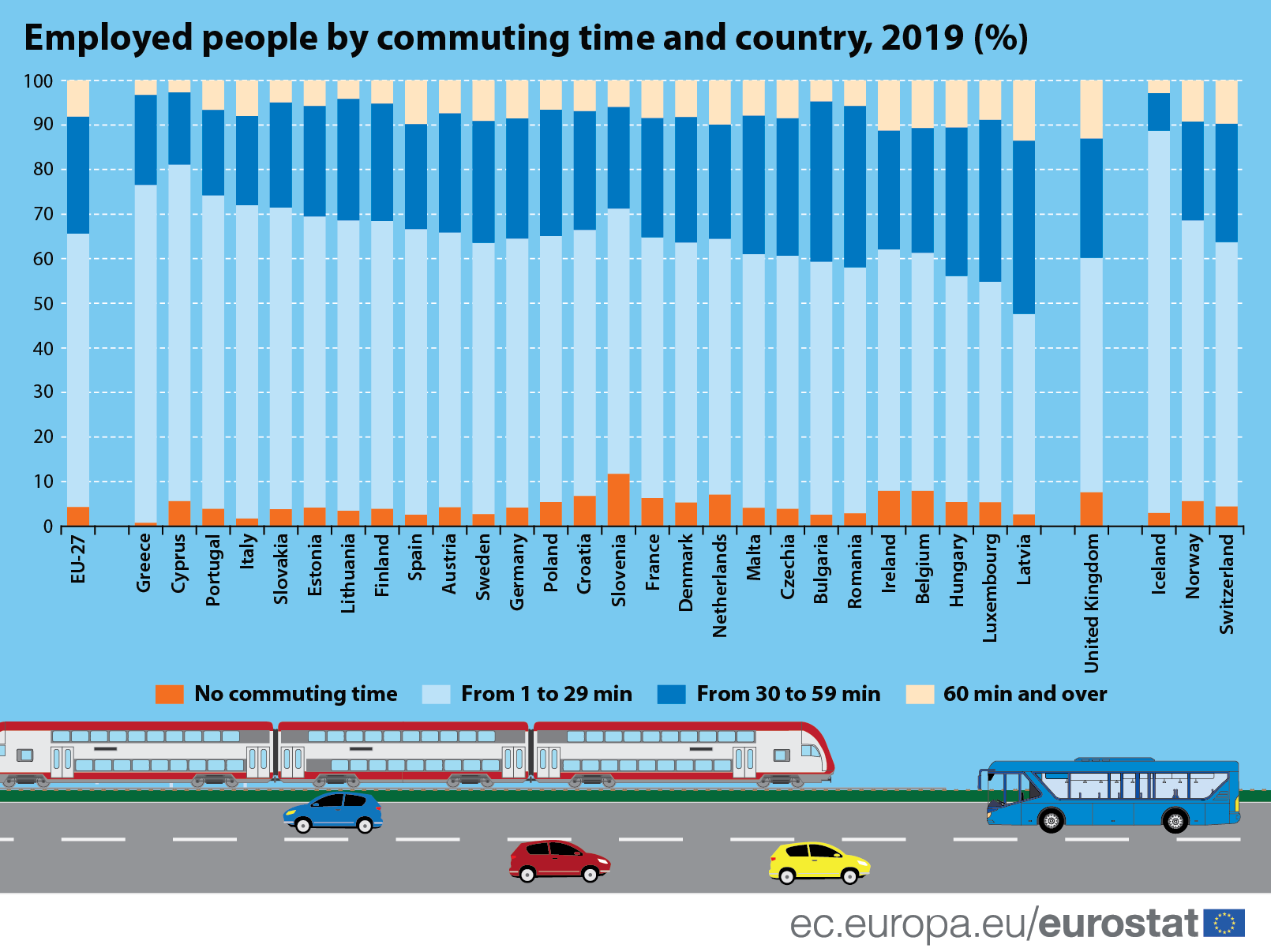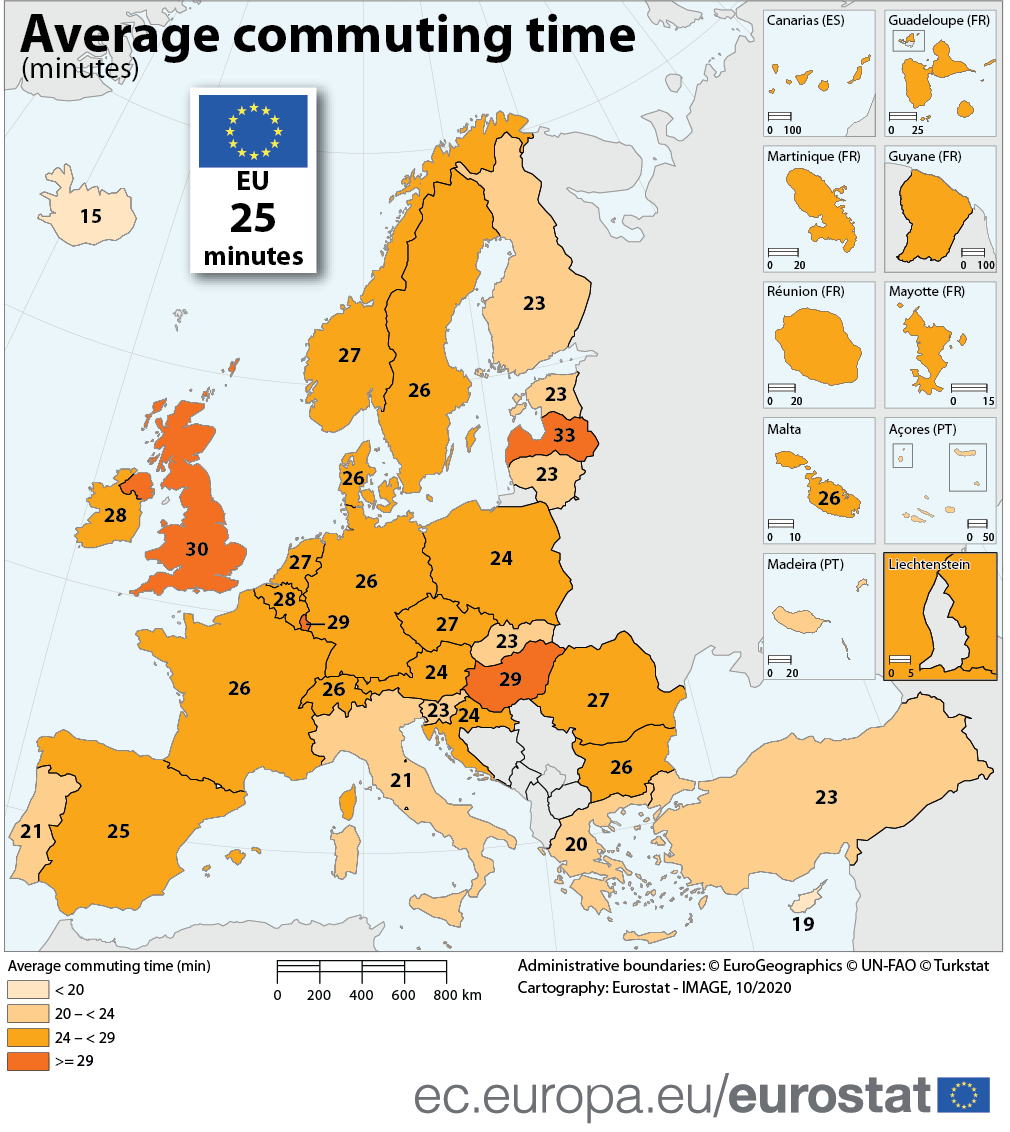
In 2019, more than half (61.3%) of employed people in the EU travelled less than 30 minutes from home to work, i.e. commuted one-way and without any detours. In comparison, one in four (26.3%) travelled for between 30 and 59 minutes, while less than one in ten (8.1%) employed had a commuting time of 60 minutes or more. Finally, only 4.3% of employed people did not need to travel at all in order to get to their main place of work. This shows the situation before the start of the COVID-19 crisis. With the crisis, the situation will have changed significantly.
At Member State level, three in four employed people in Greece (75.8%) and Cyprus (75.5%) had a one-way commuting of less than 30 minutes. In contrast, only around half of the employed in Luxembourg (49.4%) and Latvia (44.9%) were in this situation. These last two countries had the highest shares of those employed with a commuting time of 30-59 minutes among the Member States (36.3% and 38.8% respectively). The largest shares of the longest commuting times were observed in Latvia (13.5%), Ireland (11.2%), Belgium (10.7%) and Hungary (10.6%), where more than 10% of employed people had to travel from home to work for 60 minutes or more.
Source dataset: lfso_19plwk28
Average commuting time: 25 minutes
In 2019, people in employment in the EU had an average commuting time of 25 minutes. Employed people in Latvia had the longest average commuting time (33 minutes), followed by Hungary and Luxembourg (both 29 minutes). The largest share of Member States had a commuting time between 24 and 28 minutes (17 countries). The shortest average commuting times were found in Cyprus (19 minutes), Greece (20 minutes), Italy and Portugal (both 21 minutes).
Source dataset: lfso_19plwk28
To read more interesting facts and to find out the background information, please go to the Statistics Explained article on Main place of work and commuting time - statistics.
Notes: The European Union (EU) includes 27 EU Member States. The United Kingdom left the European Union on 31 January 2020. Further information is published here.
To contact us, please visit our User Support page.
For press queries, please contact our Media Support.



